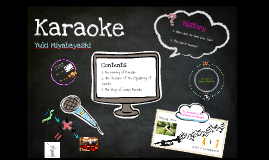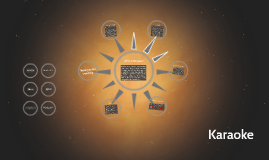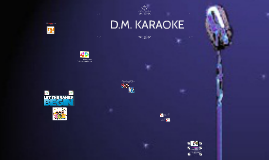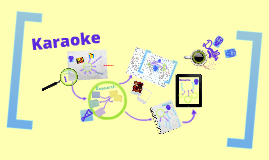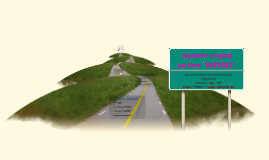KARAOKE
Transcript: SOURCE : History Of Karaoke karaoke is a Japanese word. karaoke room, which made by partitioning and soundproofing rooms in a building, were introduced and set up one after another. The first karaoke machine was created in the ‘70s. The machines started to show up in hotels and bars. During the early days, karaoke was presented to people as a diversion that enhanced the experience of drinking and socializing. The term noraebang is a Korean compound word, blending norae (song) and bang (room). At that time most of the Japanese houses were made of wood, so singing at home in the evening was very disturbing for their neighbors. That's why the "karaoke boxes" were born. Karaoke Spreads Across Asia In Taiwan, karaoke bars similar to those in Japan and South Korea are called KTVs, which stands for karaoke television. Now, in the 21st century, Karaoke has become a mainstream part of culture. Karaoke bars are now the common venue to sing at and feature an impressive array of technology that makes the first Karaoke machines laughable at best. Audrey Nethery sing karaoke people were able to convene in a small, private room. Karaoke In Asia started at a snack bar in Kobe City The guitarist could not come to perform at the bar, the owner of the bar prepared tapes of accompaniment recordings, and vocalists enjoyed singing to the tapes. Karaoke is a typical way to relax used by the Japanese businessmen, they use it to take away their stress after work. 1970s: Development of the karaoke machine now Technology Karaoke Comes To The United States Taiwan They go to a bar with some colleagues to have a drink and enjoy themselves singing to get relaxed. A noraebang refers to a singing venue in South Korea where private sound-proof rooms are available for rent, equipped for singing. The first karaoke box appeared in 1984. It’s a blend of two words — kara (“empty”) + oke (short for “orchestra”). 1970s Top 5 Fail Cover Compilations 1980s Karaoke boxes the Philippines the karaoke boom has spread abroad, enjoyed not only in Korea and China but also in Southeast Asia, the U.S., and Europe. Since karaoke displays the words and scenes of a song on a monitor, it has also been attracting the attention of countries trying to improve their literacy rate, as a good educational tool. By the late ‘80s, karaoke players started using Laser Disc technology. The significance of the Laser Disc karaoke machine was important. This was the first time a karaoke singer could see lyrics on a video monitor. the karaoke styled machine was invented by Japanese musician Daisuke Inoue in Kobe, Japan, in 1971. karaoke has become a past-time activity especially when entertaining friends at home. The 'minus-one' music on tapes during the late 1960s with prevailing songs such as the Beatles pop songs had become favorite songs. Development karaoke boxes have been built on unoccupied grounds all over Japan, and in urban areas. KARAOKE South Korea Karaoke video games Karaoke VCDs Karaoke on mobile phones Karaoke on computers and the Internet Karaoke in automobiles Karaoke is a highly popular form of recreation in Taiwan. The biggest KTV chain in Taiwan is Cashbox KTV. in a rice field in the countryside of Okayama Prefecture, just west of the Kansai area. the 90's brought in the first machines that would download a Karaoke song that someone wanted to sing. These machines would connect to the internet and download the desired song using a dial-up connection.






